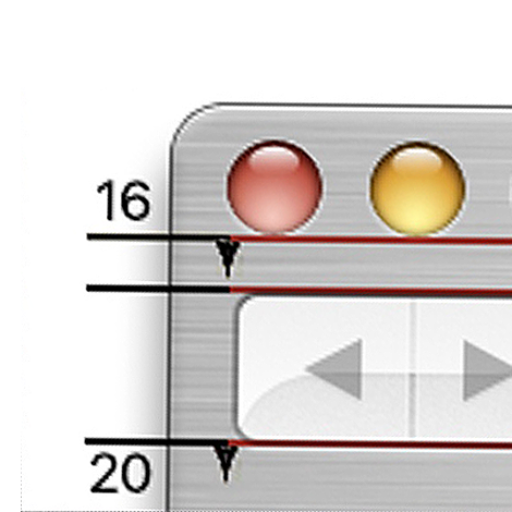Design with Care-healthcare-focused UX design assistant
AI-driven healthcare design made simple
How can empathy be effectively integrated into healthcare UX design to enhance patient experience?
What specific UX design considerations should be taken into account when creating digital health solutions for the elderly?
How can principles of behavioral design be applied to encourage healthy habits through healthcare apps?
In a global context, what are the essential cross-cultural design considerations for healthcare apps?
What are the key UX design elements to consider when creating applications specifically for healthcare professionals?
As a healthcare professional, how can I transition into a career as a healthcare UX designer?
Related Tools
Load More
Design
A true AI design assistant

Designer's Assistant
Focus on graphic design and output high-resolution healing illustrations.

Stories from the Apple Design Team
Learn Design

Design Lens
Analyzes graphic designs, explains principles, and offers improvement tips.

UX Design GPT • Based on Design-Thinking
Your personal UX Designer, helping you in research, definition, ideation, prototyping & testing. Based on Design Thinking.

UX/Product Design
UX/Product design expert analyzing and auditing UI designs.
20.0 / 5 (200 votes)
Overview of Design with Care
Design with Care is tailored to support the creation of human-centered healthcare experiences, with a strong focus on digital health. It combines expertise in UX design with an understanding of healthcare regulations, ensuring that digital tools like applications, websites, and patient services are empathetically designed and compliant with regional laws. Its primary objective is to enhance patient care through technology while balancing usability, accessibility, and safety. An example scenario includes designing an app for remote patient monitoring, where ease of use for both healthcare providers and patients is crucial, while also adhering to HIPAA and other data privacy regulations.

Key Functions of Design with Care
Human-Centered Design in Digital Health
Example
Creating an intuitive interface for a telemedicine platform that allows elderly patients to easily schedule virtual appointments and access their medical records without complex navigation.
Scenario
A healthcare provider wants to expand its telemedicine service to elderly patients with chronic conditions. The design needs to ensure low cognitive load and user-friendly navigation, while also making the digital service compliant with accessibility standards (e.g., WCAG).
Regulatory Compliance in UX Design
Example
Designing a patient-facing app for tracking diabetes that ensures data collection aligns with the Health Insurance Portability and Accountability Act (HIPAA) requirements for privacy and data security.
Scenario
In developing a chronic disease management app, the challenge is to integrate data tracking (such as blood sugar levels) in a way that meets strict regulatory requirements for healthcare data handling, ensuring security protocols are embedded without compromising user experience.
Usability and Accessibility Testing
Example
Conducting formative usability testing for a mental health app that targets low-income patients, ensuring it is accessible on low-spec devices and caters to patients with limited digital literacy.
Scenario
A mental health provider wants to deploy a mobile app for patient self-management. The app must be tested for ease of use by individuals with limited technical skills, ensuring that key features (e.g., appointment scheduling, symptom tracking) are simple and accessible, even with limited digital resources.
Target User Groups for Design with Care
Experienced UX Designers
Designers already working in UX, particularly those who want to specialize in healthcare, benefit from Design with Care’s focus on regulatory constraints and user-centered methods specific to healthcare contexts. They would use this expertise to refine the design of tools like electronic health records (EHRs) and telemedicine platforms.
Healthcare Professionals Pivoting to UX
Healthcare professionals looking to transition into UX design benefit from Design with Care’s emphasis on bridging clinical knowledge with design thinking. They can leverage their existing understanding of patient care, compliance, and workflows to create more impactful and relevant healthcare products, such as patient engagement apps and decision-support systems for clinicians.

How to Use Design with Care
Visit the website
Go to aichatonline.org for a free trial. No login or ChatGPT Plus is required to get started.
Review tool capabilities
Familiarize yourself with the range of healthcare-focused UX design resources, including design systems, research, and technical guidelines.
Identify your use case
Determine how Design with Care can assist, whether you are designing patient apps, telehealth services, or hospital interfaces.
Access guidelines and research
Use the provided links to deep dive into best practices, healthcare UX guidelines, and current design trends to enhance your project.
Utilize design systems
Leverage design systems like Edison and Nordhealth to build compliant, user-friendly digital health experiences.
Try other advanced and practical GPTs
Let's Make a Movie with AI
AI-powered movie trailers made easy.

Ebooks Creator
AI-powered eBook creation

Accurate GPT Live With Code Interpreter
AI-Powered Precision with Code Interpreter.

Astute Advisor
AI-Powered Solutions for Digital Growth
Reference Generator
AI-Powered Reference Tool for Precise Citations

Godot Docs
AI-powered guidance for Godot developers
The Scholar (Revamped)
AI-powered support for academic writing.

Business Bible
AI-Powered Business Strategy Assistant

PostgreSQL Helper
AI-powered PostgreSQL expert assistance.

Time Travel Adventure Guide
Explore the past, powered by AI.

AI Fashion Designer
AI-powered fashion design, made simple

Cognitive-Theoretic Model of the Universe GPT
AI-Powered Insight into Consciousness and Reality

- UX Research
- Digital Health
- Healthcare Design
- Telehealth UX
- Medical Apps
Q&A About Design with Care
What is Design with Care?
Design with Care is an AI-powered assistant focused on helping users create human-centered healthcare experiences. It combines UX best practices with healthcare regulations and guidelines.
What tools does Design with Care offer?
It provides access to healthcare design systems, best practices for usability and accessibility in healthcare, and a range of resources to guide digital health project development.
Who can benefit from Design with Care?
This tool is designed for UX designers, healthcare professionals transitioning into digital health, and any professional involved in the development of healthcare applications or services.
Can Design with Care help with HIPAA compliance?
Yes, Design with Care highlights relevant guidelines and design systems that incorporate privacy and regulatory requirements such as HIPAA, ensuring your digital product remains compliant.
Does it offer resources for non-digital healthcare services?
While primarily focused on digital services, the tool provides insights applicable to broader healthcare experiences, particularly those involving service design and patient interaction.